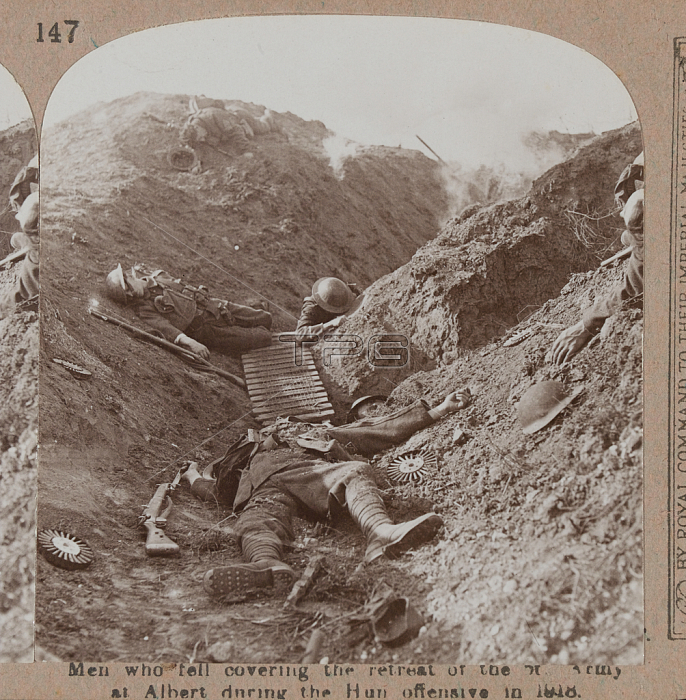
5923037 ?Men who fell covering the retreat at Albert during the Hun offensive? 1918 (b/w photo) by Unknown photographer, (20th century); National Army Museum, London; (add.info.: ?Men who fell covering the retreat at Albert during the Hun offensive? 1918. Photograph, World War One, Western Front, 1918. On 21 March 1918 the Germans launched Operation MICHAEL, their final offensive in the west. Around 10,000 guns fired over a million shells in five hours against Lieutenant General Byng?s Third and General Gough?s Fifth Armies before 47 German divisions attacked. Using infiltration tactics the German storm troopers by-passed pockets of resistance and broke through the British trench system, leaving the following waves of troops to ?mop up? any resistance. Lacking reserves, Gough?s line soon gave way and by the evening of 23 March the Germans had advanced 19 kilometres (12 miles). In the days that followed the offensive continued. Although the Germans advanced as much as 64 kilometres (40 miles), by 5 April their attack began to run out of steam and they were held east of Amiens. Total British losses were 178,000 men. The French who became engaged as the battle developed lost 77,000 and the Germans 240,000. On 9 April the Germans tried again with a smaller offensive south of Ypres, which captured the Messines ridge and much of the Passchendaele salient. Once again the German attack lost momentum. Although they tested the French with a series of offensives further south between 27 May and 17 July, the Germans had shot their bolt. German morale began to crumble and on 18 July the French launched a counter-attack on the Marne, forcing the Germans back. From a collection of 96 stereoscopic photographs entitled ?The Great War?.); by National Army Museum .
| px | px | dpi | = | cm | x | cm | = | MB |
Details
Creative#:
TOP27772025
Source:
達志影像
Authorization Type:
RM
Release Information:
須由TPG 完整授權
Model Release:
No
Property Release:
No
Right to Privacy:
No
Same folder images:

 Loading
Loading